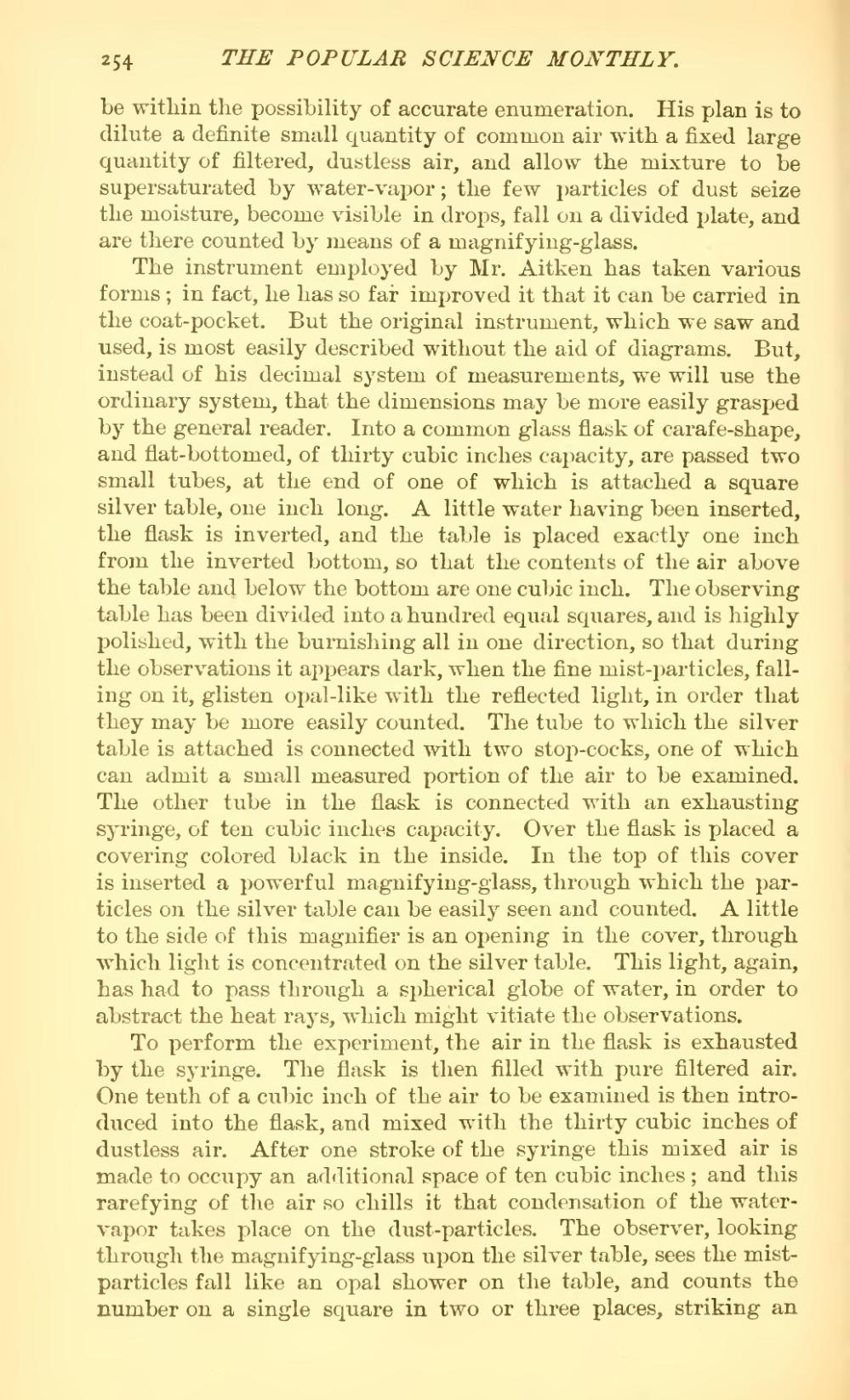be within the possibility of accurate enumeration. His plan is to dilute a definite small quantity of common air with a fixed large quantity of filtered, dustless air, and allow the mixture to be supersaturated by water-vapor; the few particles of dust seize the moisture, become visible in drops, fall on a divided plate, and are there counted by means of a magnifying-glass.
The instrument employed by Mr. Aitken has taken various forms; in fact, he has so far improved it that it can be carried in the coat-pocket. But the original instrument, which we saw and used, is most easily described without the aid of diagrams. But, instead of his decimal system of measurements, we will use the ordinary system, that the dimensions may be more easily grasped by the general reader. Into a common glass flask of carafe-shape, and flat-bottomed, of thirty cubic inches capacity, are passed two small tubes, at the end of one of which is attached a square silver table, one inch long. A little water having been inserted, the flask is inverted, and the table is placed exactly one inch from the inverted bottom, so that the contents of the air above the table and below the bottom are one cubic inch. The observing table has been divided into a hundred equal squares, and is highly polished, with the burnishing all in one direction, so that during the observations it appears dark, when the fine mist-particles, falling on it, glisten opal-like with the reflected light, in order that they may be more easily counted. The tube to which the silver table is attached is connected with two stop-cocks, one of which can admit a small measured portion of the air to be examined. The other tube in the flask is connected with an exhausting syringe, of ten cubic inches capacity. Over the flask is placed a covering colored black in the inside. In the top of this cover is inserted a powerful magnifying-glass, through which the particles on the silver table can be easily seen and counted. A little to the side of this magnifier is an opening in the cover, through which light is concentrated on the silver table. This light, again, has had to pass through a spherical globe of water, in order to abstract the heat rays, which might vitiate the observations.
To perform the experiment, the air in the flask is exhausted by the syringe. The flask is then filled with pure filtered air. One tenth of a cubic inch of the air to be examined is then introduced into the flask, and mixed with the thirty cubic inches of dustless air. After one stroke of the syringe this mixed air is made to occupy an additional space of ten cubic inches; and this rarefying of the air so chills it that condensation of the water vapor takes place on the dust-particles. The observer, looking through the magnifying-glass upon the silver table, sees the mist particles fall like an opal shower on the table, and counts the number on a single square in two or three places, striking an

